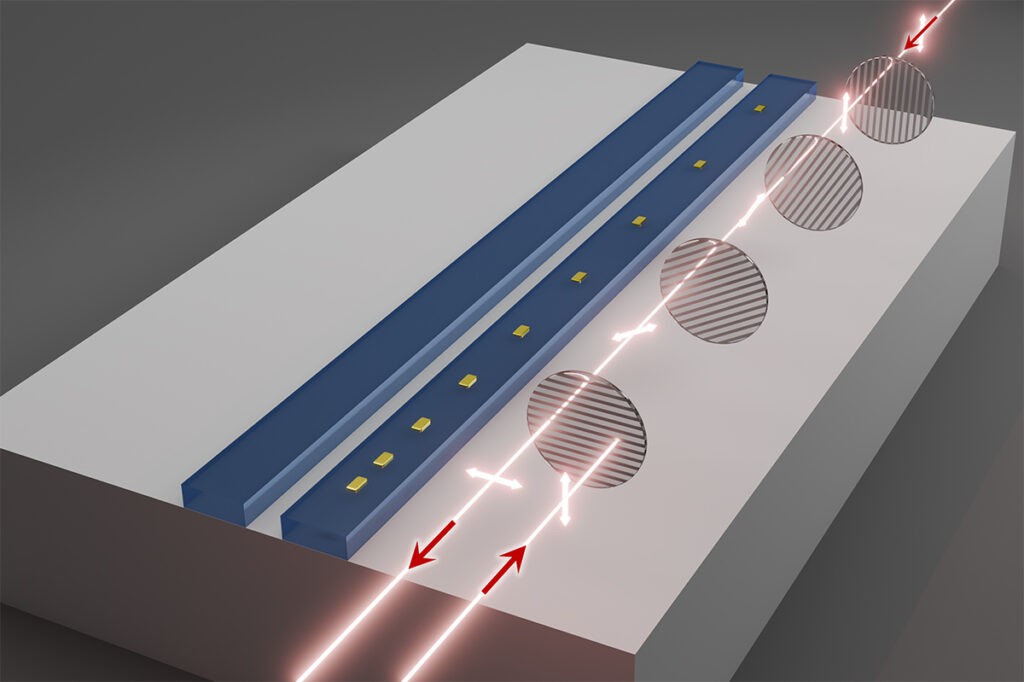2025-05-14 ワシントン大学セントルイス校
 A new method developed by WashU researchers can reconfigure transmission directions of light in a way that will lower expenses and simplify photonic circuits. (Image: Micro/Nano Photonics Lab)
A new method developed by WashU researchers can reconfigure transmission directions of light in a way that will lower expenses and simplify photonic circuits. (Image: Micro/Nano Photonics Lab)
<関連情報>
- https://source.washu.edu/2025/05/a-new-approach-to-control-light-in-photonic-circuits/
- https://engineering.washu.edu/news/2025/A-new-approach-to-control-light-in-photonic-circuits.html
- https://www.science.org/doi/10.1126/sciadv.adu4653
空間的にチャープされたFloquetパリティ時間対称フォトニクスにおけるオンチップ再構成可能伝送 On-chip reconfigurable transmission in spatially chirped Floquet parity-time symmetric photonics
Wenbo Mao, Fu Li, Qian Zhang, Weijie Xu, […] , and Lan Yang
Science Advances Published:7 Mar 2025
DOI:https://doi.org/10.1126/sciadv.adu4653
Abstract
Phase transition in parity-time (PT) symmetry is one of the most intriguing discoveries in non-Hermitian physics, giving rise to plenty of physical phenomena and strategies to develop advanced devices and systems, such as unconventional lasers, nonreciprocal transmission, and enhanced sensitivity. Floquet PT-symmetric systems are characterized by time-periodic Hamiltonians, in which the gain or loss is modulated to steer the PT phase, providing an additional dimension for realizing phase transitions. In this study, we introduce frequency-varying modulation, specifically spatially chirped modulation, into on-chip Floquet PT-symmetric photonic waveguides to explore their unique properties. The waveguides exhibit distinct forward and backward transmissions when the system dynamically evolves around phase transition points, i.e., exceptional points. Furthermore, reconfigurable asymmetric transmission systems are developed by integrating tunable mode switches. Combining non-Hermitian physics with the advanced technologies of photonic integrated circuits holds great potential to create devices and systems with improved functionalities and enhanced performance.



